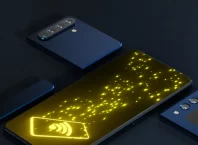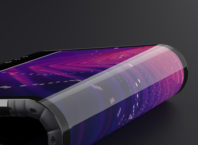Smartphones in 2019 are resistant to water and dust. Most of them have a non-replaceable battery inside. In this case, it is not possible to replace the battery with a new one. Presently, we have two different technologies for the production of batteries (Li-Ion and Li-Po). Unfortunately, they have many differences for the user’s good maintenance.
| Smartphone | LG G7 | LG G6 | iPhone X | Samsung S9 | Huawei P20 Pro |
| Battery code | BL-T39 | BL-T32 | – | EB-BG9600ABA | – |
| Battery Type | Li-Po | Li-Po | Li-Ion | Li-Ion | Li-Ion |
| Nominal Voltage | 3,85 V | 3,8V | 3,81V | 3,85V | 3,82V |
| Capacity | 3000 mAh | 3300 mAh | 2700 mAh | 3000 mAh | 4000 mAh |
| Consumption | 11,6 Wh | 12,5 Wh | 10,35 Wh | 11,55 Wh | 11,2 Wh |
The entire data of the battery can be found inside the smartphone. When removing the back of iPhone X, you can find the battery module. In 2018 Apple, wanting to improve iPhone’s overall battery timing, placed two compatible batteries in it. They are connected and work as a single battery. The photo below shows the iPhone X battery module.

Li-Ion is the term for a lithium-ion battery. This type of battery is very popular. This battery has proven to be very efficient for mobile pplications because of having a good energy-to-mass ratio. The battery is very small and durable. Its capacity is expressed by mAh (milliamp-hour). The higher the value in mAh, the longer the smartphone’s working time.
Li-Po is the next step in battery technology. In the middle we can also find lithium, but here the producers add additional conductive polymers. This type of battery is more flexible, but also more dangerous for the customer Hence requiring more protection than the Li-Ion batteries. The most important value is the capacity, which can be greater than 3000 mAh.
The Li-Po battery damages easily during charging. Even a very short overcharge can cause permanent damage during battery operation. In this case, you can find a BMS (Battery Management System) module on the smartphone that takes care of charging the battery.
QUICK CHARGE
Today, mainly due to large screens, powerful processors and fast cellular networks, the battery timing is about 1 to 3 days. The charging time should not be too long. Hence, a few minutes of charging should be enough for another 3-4 hours working time of the smartphone.
To speed up the battery charging process, it is enough to provide more energy to the battery. To provide more energy to the battery, you need to increase the amount of current or voltage drawn from the charger. For this reason, the latest chargers (Quick Charge) have an increased current and voltage capacity.

Latest version for speed charging is Quick Charge 4.0+. This version allows you to charge your battery from 0 till 100% in 80 minutes. Unfortunately, for this solution, you need a USB port with power delivery solution (USB PD) in your smartphone. Also Quick Charge solution is combined with main CPU unit inside the smartphone. It means that you cannot use quick charger 4.0+ version if your smartphone has no support for this solution.
WIRELESS CHARGING
Latest technology solutions allow you to charge your smartphone’s battery by using wireless technology. In this solution you don’t need any cable between smartphone and charger. If your smartphone supports wireless charging, it means that inside the phone hardware your phone has a coil which is responsible for reversing electromagnetic field to power energy. In this case, to charge your smartphone, you need much more time, but it is a great solution if you place smartphone next to you in your job without any cables. Also latest solution allows to ”share power” between two smartphones by wireless charging technology.

RULES FOR BATTERY
To keep the battery in good condition throughout the life of your smartphone, it’s good to remember four rules. These four principles help you keep your battery in good condition even after two years of buying a new smartphone.
A smartphone with a Li-Ion / Li-Po battery when fully charged will stop charging the battery. So you do not have to pull the cable from the charger when it is fully charged. For this reason, you can start charging your phone in the evening and disconnect it in the morning without any problem.

A smartphone with a Li-Ion / Li-Po battery when fully charged will stop charging the battery. So you do not have to pull the cable from the charger when it is fully charged. For this reason, you can start charging your phone in the evening and disconnect it in the morning without any problem.

It’s better to charge the battery every night than to discharge it for the rest of the night. Every time you discharge your battery below 10%, you will shorten the battery life. For a lithium battery, it is not a problem when you recharge it and discharge it from 30% to 80%. If you want to turn off your smartphone for 1 week, it’s a good idea to discharge the battery by up to 40% and leave it until you turn your smartphone back on.

If you need to buy a new battery or a new charger, always buy original parts from the manufacturer. Because cheap replacements can shorten your smartphone’s working time. Sometimes a cheaper battery can have a lower capacity than it is written on. Also, the charger may be damaged or have incorrect parameters, so you can destroy a good original battery.

Photo by Andreas Haslinger on Unsplash





